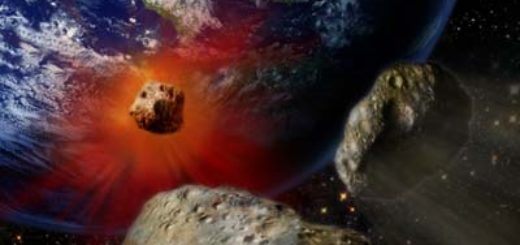Mysterious unidentified object crashes in Myanmar

Workers work in tea leaf field at Mong Mao in ethnic Wa territory in north east Myanmar October 1, 2016. Picture taken on October 1, 2016. (REUTERS/Soe Zeya Tun)
A large, unidentified metal object fell from the sky Nov. 10 in the remote mountainous region of Myanmar.
The cylindrical object, which is about 12 feet long and 5 feet in diameter, blasted into the village of Lone Khin, near a jade mine. Villagers woke early in the morning to a loud boom and vibrations, when the object fell to the ground. Though no one was injured, the UFO ripped through a jade miner’s tent, and afterwards, the smell of burning filled the air, according to The Myanmar Times.
“Initially, we thought it was a battle. The explosion made our houses shake. We saw the smoke from our village,” Lone Khin villager Daw Ma Kyi told The Myanmar Times.
Unidentified piece of an aircraft, believed to be an engine, falls near Hpakant jade mine | #Myanmar https://t.co/W2im1NOCdh pic.twitter.com/NFRCJiAYM5
At first glance, the object looks like it may have come from an aircraft.
“I think it was an engine because I found a diode and many copper wires at the tail of the body,” villager Ko Maung Myo told The Myanmar Times. “It also looks like a jet engine block.”
However, government officials say that they haven’t identified the object and are sending experts to examine it. One former government official with the Department of Aviation said that the image shown on Facebook of the metal “UFO” looked more like a rocket booster than part of a commercial plane.
Just yesterday China announced the successful launch of a Long March Rocket 11 into space, along with five satellites and an experimental X-ray pulsar navigation spacecraft, Spaceflight Insider reported. The XPNAV-1 (an acronym for Maichong Xing Shiyan Weixing), a 530-pound spacecraft fitted with solar arrays and two detectors that use X-ray emissions from pulsars to navigate, is meant to identify the locations of spacecraft in deep space.
Space debris is a regular part of satellite and rocket launches. Though the odds of any individual person getting struck by detritus is low, the odds that it hits one of the 7 billion people on Earth is surprisingly high: After the launch of a school bus-sized satellite in 2011, Mark Matney, a scientist in the Orbital Debris Program Office at NASA’s Johnson Space Center in Houston, previously told Live Science that the odds of anyone being hit by that debris immediately after the launch were approximately one in 3,200.
Space is littered with junk from past exploration. All told, there were at least 500,00 pieces of space junk marble-size or larger that are orbiting our planet in 2010, though most pieces are on the small side. Of that space junk, more than 20,000 pieces are larger than a softball, according to NASA. In 2012, Switzerland proposed building a kind of space janitor to clean up some of that debris.
Copyright 2016 LiveScience, a TechMediaNetwork company. All rights reserved. This material may not be published, broadcast, rewritten or redistributed.



 Creators of mankind
Creators of mankind Description of “Tall white aliens”
Description of “Tall white aliens” Where they came from?
Where they came from? About hostile civilizations
About hostile civilizations The war for the Earth
The war for the Earth “Tall white aliens” about eternal life
“Tall white aliens” about eternal life Video: “Nordic aliens”
Video: “Nordic aliens” Aliens
Aliens Alien encounters
Alien encounters The aliens base
The aliens base UFO
UFO Technology UFO
Technology UFO Underground civilization
Underground civilization Ancient alien artifacts
Ancient alien artifacts Military and UFO
Military and UFO Mysteries and hypotheses
Mysteries and hypotheses Scientific facts
Scientific facts


















